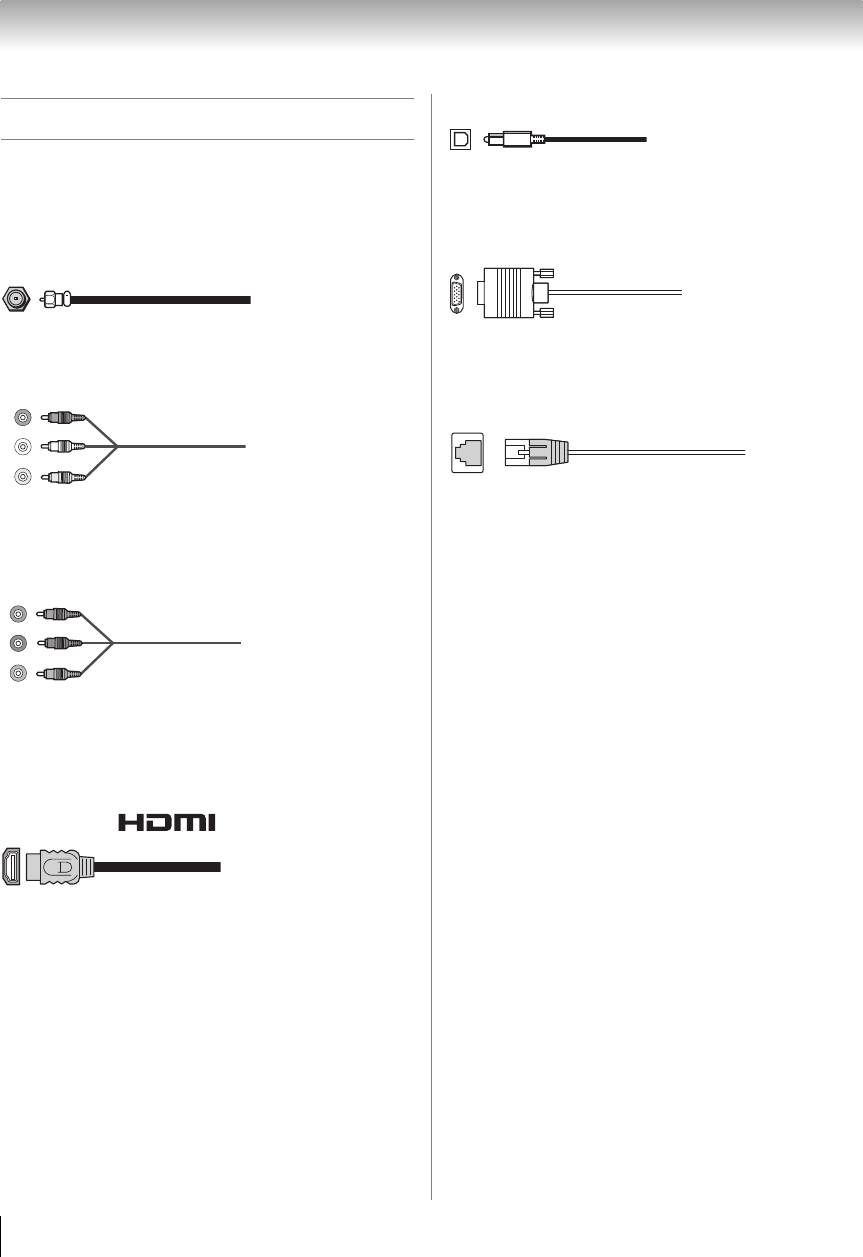
14
Chapter 2: Connecting your TV
Overview of cable types
Before purchasing cables, know the connector types
your devices require.
You can purchase cables from most stores that sell
audio/video devices.
Coaxial cable (F-type)
(F-type) Connects your antenna, cable TV service, or
cable converter box to your TV.
Standard A/V cables (composite video)
Use with video devices with analog audio and
composite video output. These cables (and the related
inputs on your TV) are often color-coded.
Component video cables
Use with video devices with component video output.
Separate audio cables are required. (ColorStream
®
is a
Toshiba brand.)
Note: Component video cables provide better picture
quality than composite video cables.
HDMI
®
cable ( )
Use it with devices built-in HDMI output. An HDMI
cable delivers digital audio and video in its native
format. Separate audio cables are not required
(- p. 16, 19–20).
Note: HDMI cables provide the best audio and picture
quality.
Optical audio cable
Connects receivers with Dolby Digital or PCM (pulse-
code modulation) optical audio input to the TV’s
DIGITAL AUDIO OUT terminal (- p. 18).
Analog RGB (15-pin) computer cable
Connects a PC to the TV’s PC IN terminal (- p. 20).
Note: Separate audio cables are required.
Standard/Crossover LAN cable
Standard LAN cable is used to connect the TV to your
home network (- p. 21).
Crossover LAN cable is used to connect the TV directly
to a PC (- p. 21).
About the illustrations
Note: The connection illustrations shown are
representative of typical device connections only. The
input/output terminals on your devices may differ. See
each device’s owner’s manual.
VIDEO
AUDIO
LR
Red
White
Yellow
P
B
PR
Y
Red
Blue
Green


















